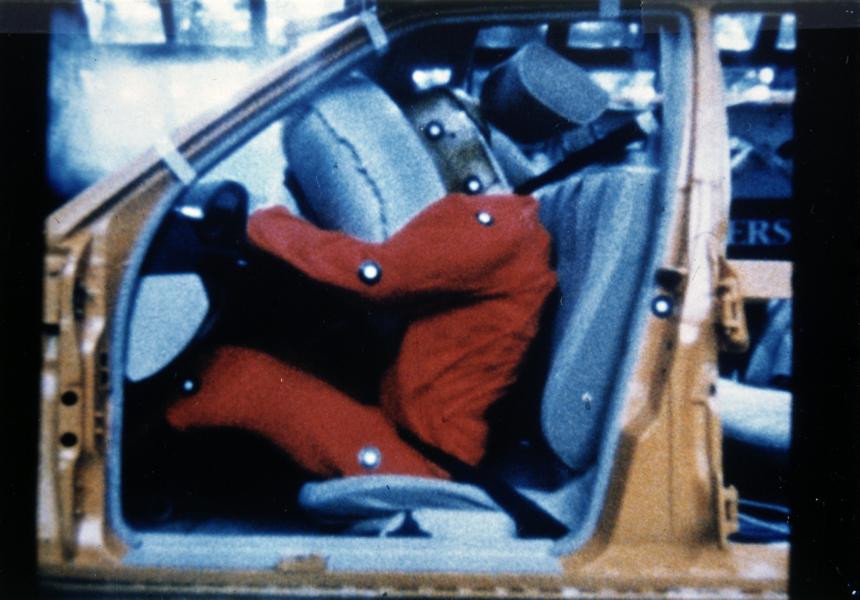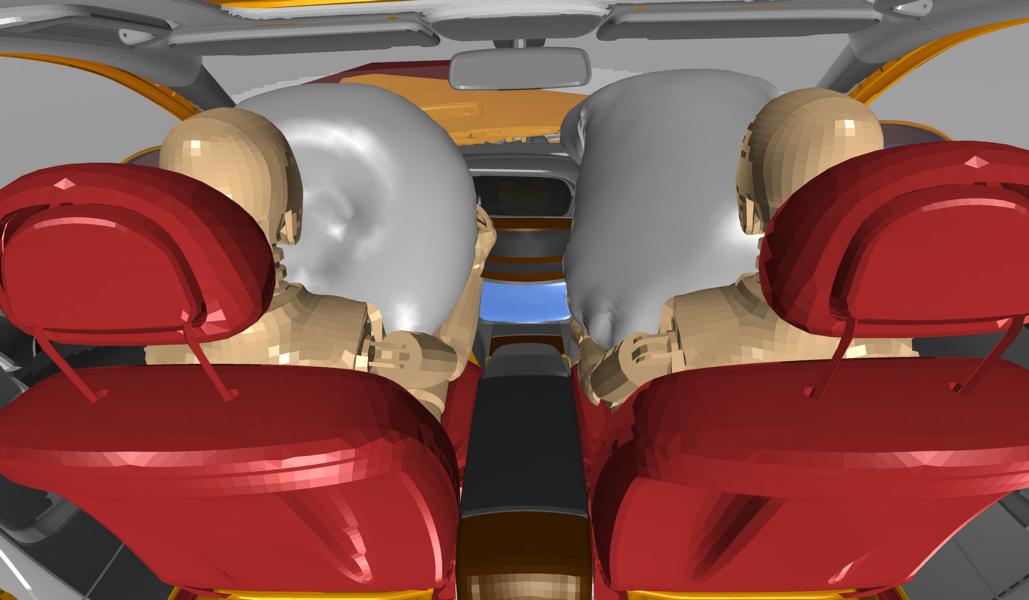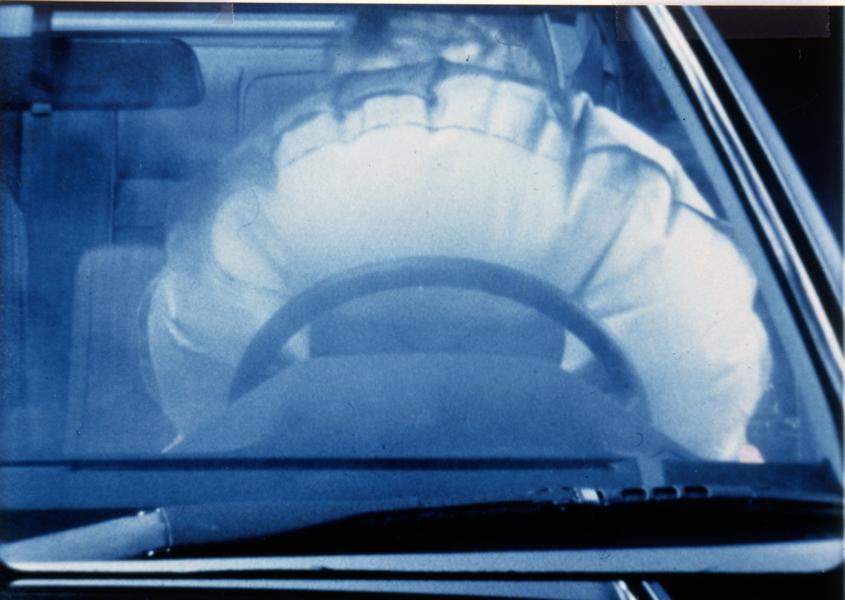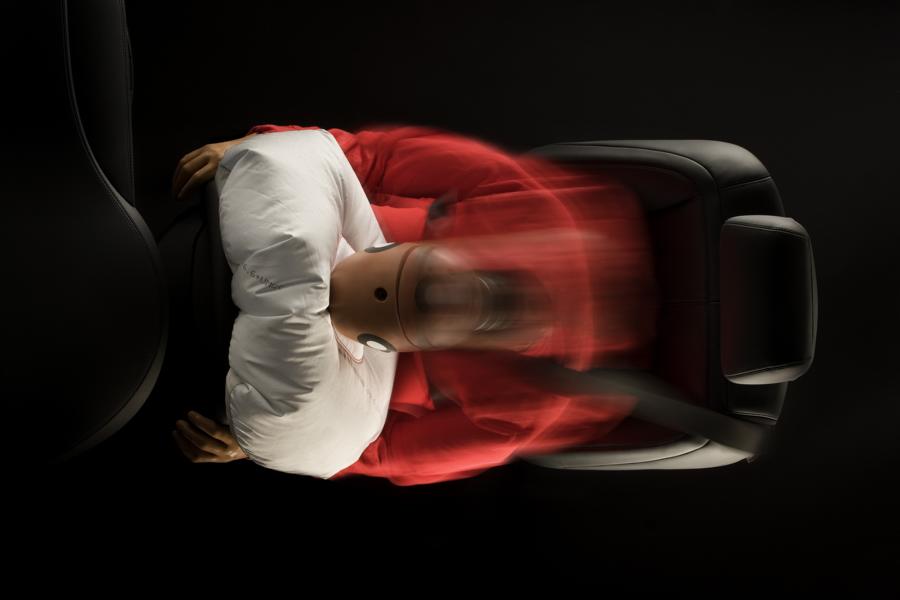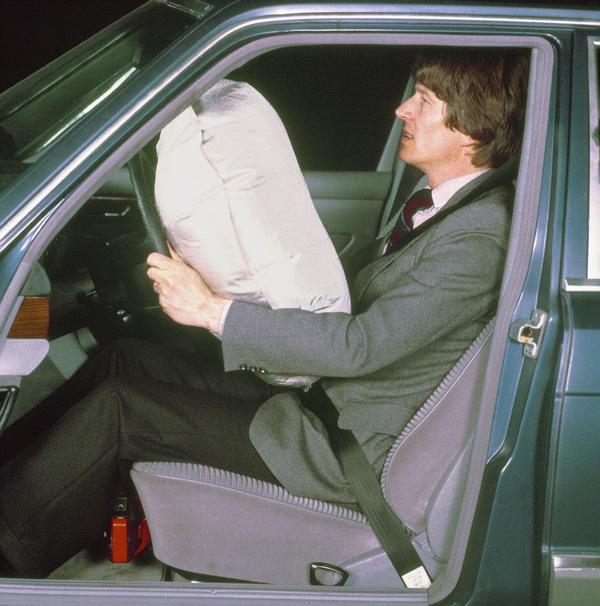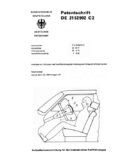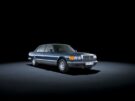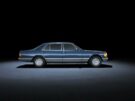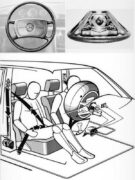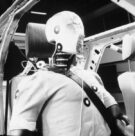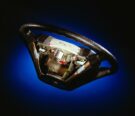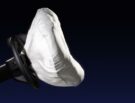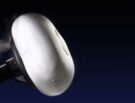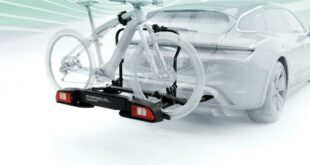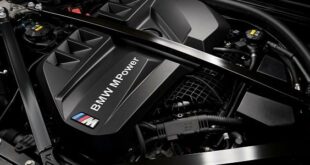The airbag is one of the outstanding innovations from Mercedes-Benz in the field of passive safety. A particularly important date for this success story is October 23, 1971: 50 years ago, the then Daimler-Benz AG registered a patent on this day with the title “Impact protection device for the occupant of a motor vehicle” (patent specification DE 21 52 902 C2). The brand's engineers have been working with the inflatable airbag since 1966. At the end of 1980, the first sedans of the S-Class (126 series) were delivered with the combined system of driver airbag and belt tensioner. The public world premiere will take place from February 5 to 15, 1981 at the Amsterdam International Motor Show (IAMS). This shows how important persistence and staying power are for the success of automotive developments.
fundamental patent for the airbag
- Patent from 1971 for an "impact protection device for the occupant of a motor vehicle"
- At the end of 1980, the first examples of the Mercedes-Benz S-Class were delivered with a driver airbag
- The belt tensioner is inserted parallel to the airbag
- 2021: Mercedes-Benz and Heron Preston present a fashion collection made from recycled airbags
The series introduction of the driver and front passenger airbag took place in 1992, initially in the S-Class, SL and the 400 E and 500 E types (124 series). The security system is optionally available for all other models. This "impact protection device" has found its way into practically all newly built passenger cars over the past four decades. In the USA, the installation of front airbags for the driver and front passenger became a legal requirement as early as 1997. In the service of safety, Mercedes-Benz is continuously advancing the development of airbags. Other important innovations are the side airbag (1995), the windowbag (1998), the head-thorax side airbag (2001), the kneebag (2009) and in 2013 the thorax-pelvis sidebag, the cushionbag and the beltbag, an inflatable belt strap.
In the S-Class of the 2005 series presented in 221, the gas generator fills the driver and front passenger airbags in two stages, depending on the severity of the accident. In the current S-Class (223 series), frontal airbags for the two outer rear seats are available for the first time. 40 years after the introduction of the airbags, a completely new concept is being used for the first time, which is particularly suitable for the conditions in the rear. The large number of systems and innovations in active and passive safety - many of which were developed by Mercedes-Benz - help reduce the number of people injured and killed on the road. For example, the number of road deaths in Germany will drop from 18.753 in 1971 to 2.719 in 2020.
30 years from the idea to the presentation
The inventor Walter Lindner registered an invention with the German Patent Office as early as October 6, 1951, in which there is talk of an "inflatable container in a folded state that inflates automatically in the event of danger". The man from Munich calls his idea “a device to protect people in vehicles against injuries in the event of a collision”. Despite all the similarity of the description to later airbags, seven decades ago there was a lack of practical implementation. There are still deficits, for example, in the release sensors, the pressure generation for filling the airbag in milliseconds and the necessary tear resistance of this cover. Mercedes-Benz took up the airbag idea in 1966. Professor Guntram Huber, who has been responsible for safety technology at Mercedes-Benz for decades, says, referring to the beginnings: "We knew that we would make it, we just didn't know when we would be finished."
After around 250 accident attempts, more than 2.500 tests with the impact sled and thousands of experiments with individual components, the safety engineers at Mercedes-Benz brought the technology to series production readiness over the next 15 years. The breakthrough in gas generation was achieved with a solid propellant such as that used in rocket engines. It is housed in tablet form in the impact pot of the steering wheel next to the folded airbag. In the event of an accident, a pyrotechnic gas generator ignites the fuel and the airbag made of light, tear-resistant polyamide with an initial volume of 60 to 70 liters (driver's airbag) is inflated within around ten milliseconds. “It folds up again almost as quickly,” explains mechanical engineer Professor Huber, “that is important, otherwise the occupants would swing back and forth.” After activation, a harmless nitrogen gas remains. Because explosives are used, Huber's development team even has to complete an explosives course by order of the authorities.
Belt and airbag as a team
From January 21, 1974, seat belts must be installed in new cars in the Federal Republic of Germany; the roll-up three-point belt with one-hand operation is quickly becoming established and considerably reduces the consequences of accidents. The safety developers at Mercedes-Benz recognized early on that the protective effect could still be improved. The result is the system introduced at the end of 1980: on the driver's side, the airbag supplements the seat belt, on the front passenger seat it is the belt tensioner, as it was originally called. The two components form a good team in the event of a severe frontal collision: the airbag also supports the head and neck in addition to the upper body and reduces contact with the steering wheel, for example, and seat belts and belt tensioners hold the upper body back. As early as 1984, the seat belt tensioner, the new name for this safety feature, was part of the equipment for both front seats in Mercedes-Benz passenger cars. The belt tensioner is triggered parallel to the airbag and also by pyrotechnics. The propellant charge ensures that the automatic three-point seat belt is tightened tightly within a few milliseconds. Both driver and front passenger are held close to the seat surfaces. It continues unabated: In September 1987, Mercedes-Benz presented the front passenger airbag.
The energy-absorbing airbag is a prerequisite for another innovation: in 1995 the belt tensioner was connected to a belt force limiter, which further reduced the force exerted on the chest. The next major development step took place in 2002 with the introduction of the preventive occupant protection system PRESAFE®, which, in addition to other key features, also contains a belt with an additional electric motor in the belt retractor. In contrast to the pyrotechnically triggered belt tensioner, the electronic variant is reversible and can therefore be activated before an accident, for example in recognized dangerous situations. If the collision does not occur, the belt loosens again.
2021 - inspired by innovation: a fashion collection made from recycled airbags
At the end of August 2021, Mercedes-Benz will present a “Concept Collection” in collaboration with the US designer and creative director Heron Preston. This shows how innovation and sustainability together set new accents in fashion design. The homage to the airbag is inspired by two anniversaries of the life-saving safety feature: the patent was granted 50 years ago and series production in Mercedes-Benz cars a good 40 years ago. In keeping with the upcycling idea, the looks are created entirely from recycled airbag material. (Image credit: Mercedes-Benz)
Of course, that wasn't the end of it!
tuningblog has countless other articles on the subject of car and auto tuning in stock. Do you want to see them all? Just click HERE and look around. In part, we would like to provide you with news but also off the tuning. In our category Tips, products, information & Co We have reviews of car or accessories manufacturers, new ones Tuning Wiki Terms or one or the other Leak veröffentlicht. Following an excerpt of the last articles:
|
Charge quickly, travel quickly: charging network with over 1,21 gigawatts |
"Tuningblog.eu" - we keep you up to date on the subject of car tuning and car styling with our tuning magazine and we present you the latest tuned vehicles from all over the world every day. It's best to subscribe to ours Feed and will automatically be informed as soon as there is something new about this post, and of course also to all other contributions.
 tuningblog.eu Your magazine about tuning the car
tuningblog.eu Your magazine about tuning the car
